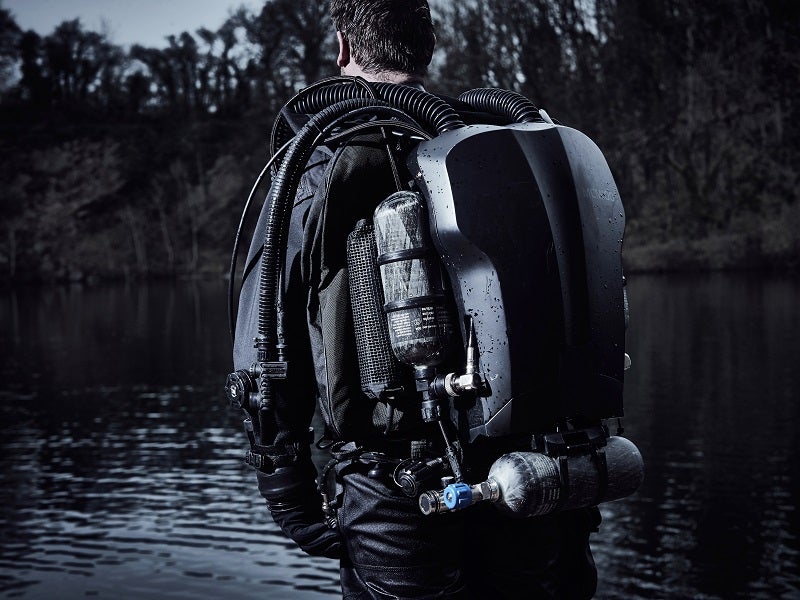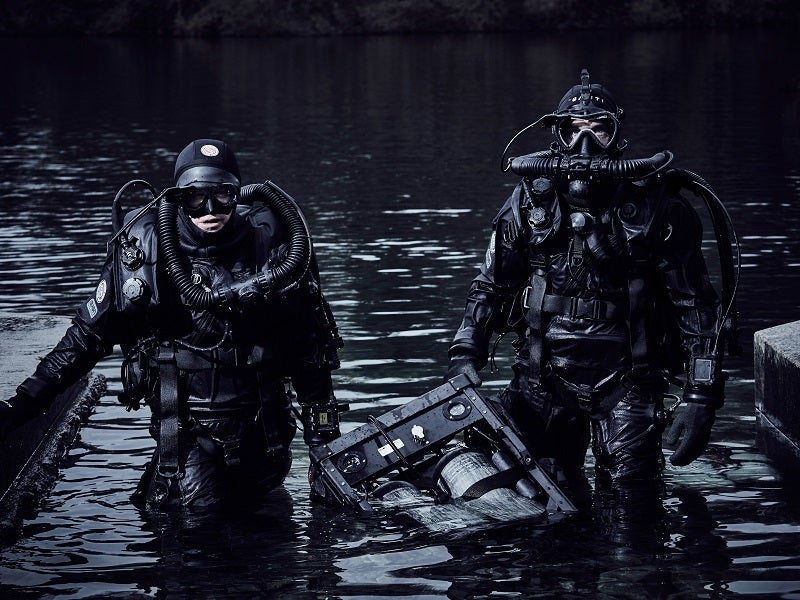Military divers are tasked with achieving extremely complex mission objectives in one of the most demanding operating environments on earth – and equipping them to succeed is no easy task. Kevin Gurr, Director Underwater Systems at Avon Protection, takes us underneath the murky surface of the military diving world, and shares how the company is shaping the future of what is possible for its customers beneath the waves.
Military divers are tasked with some of the most dangerous missions in the modern battlefield. Even those tasks considered routine require equipment with the highest performance standards to keep operators safe in the harsh environmental conditions in which they work.
For those operating in roles such as mine-countermeasures (MCM) and explosive Ordnance disposal (EOD) clearance, the performance demands are even higher. But one thing that all military diving roles have in common today is the growing demand to extend the mission envelope, with a general drive toward allowing divers to operate deeper and for longer periods than ever before.
Paired with this is the changing nature of the threat in the maritime domain, with the shifting geo-political landscape increasingly driving militaries to consider the maritime sphere as equally critical as the terrestrial. Consider some of the events even in the past 12 months that have impacted regional security here in Europe, and the importance of security in the underwater domain is clear.
Investment is beginning to reflect this. Many nations are looking to replace their ageing military diving equipment toolkits, and Avon Protection’s new centre of maritime excellence is helping them understand how best to leverage new developments to equip their operators with the best systems to help overcome their particular set of challenges.
See Also:
Multi-role capability
Avon Protection’s flagship product is the MCM100 – a multi-role (100m CE rated), air and mixed gas electronic control underwater rebreather.
How well do you really know your competitors?
Access the most comprehensive Company Profiles on the market, powered by GlobalData. Save hours of research. Gain competitive edge.

Thank you!
Your download email will arrive shortly
Not ready to buy yet? Download a free sample
We are confident about the unique quality of our Company Profiles. However, we want you to make the most beneficial decision for your business, so we offer a free sample that you can download by submitting the below form
By GlobalDataDesigned and developed around the diver to deliver enhanced multi-role capability in the form of a new long endurance, electronically controlled rebreather, the MCM100 is suitable for a range of military diving applications, including mine warfare, special forces, covert subsurface infiltration, submarine release and infiltration, and manned underwater vehicle operations.
The system places two key elements at the heart of the platform: diver safety and multi-role mission capability, enabled by its world-leading, revolutionary, advanced electronics package.
The electronics architecture provides a critical advantage for its users, as it takes vital safety monitoring and decision-making cognitive burdens off the diver by employing a command-based interface, removing the margin for human error and allowing them to concentrate on the mission at hand. Combined with a highly efficient carbon dioxide filter system, digital oxygen sensors, a moisture tolerant digital carbon dioxide sensor, data acquisition facility with Bluetooth capability, and a backlit colour handset with automated pre-dive and command-based alarms, the MCM100 enables missions of greater duration across a wider operating depth than traditional systems and at extreme work rates.
The system also reduces the physical burden on divers with an extremely low work of breathing design; and has a low magnetic and acoustic signature enabling stealth and MCM operations.

With the MCM100 Avon Protection is helping military divers overcome the limitations of the human body in extreme underwater conditions, many of which had previously become chronic in military diving technology. Among them, Avon Protection has mitigated the danger of oxygen toxicity by developing the MCM100 to operate on mixed gases, customizable depending on the dive plan while maintaining a fixed partial pressure of oxygen.
The duration of dives has been extended by employing an Electronic Closed-Circuit Rebreather design, removing issues associated with pure oxygen and SCR systems through a combination of smart sensing that ensures a constant maximum PPO2 throughout the dives at all depths and utilising digital CO2 sensors to remove the serious risk of elevated CO2 levels to the diver. And paired with Avon Protection’s Core Intelligent Undersuit, users can regulate their body temperature in all water conditions and protect their operational effectiveness.
Shaping the future
The depth of understanding and specialisation in military diving – both on the technology and human factors sides – is a unique part of Avon Protection’s heritage and continuing role as a leader in this sector. The naval groups we work with around the globe are partners rather than simply customers, and we work very closely with them to listen to their needs and help them formulate future operational roadmaps.
As a result, we are always looking ahead when developing our own technology, as reflected in the MCM100. When it launched in 2018 it delivered a revolution in rebreather technology, and under our ongoing spiral development it remains the most future-proofed product on the market. We have engineered many ‘smarts’ into the system that still remain to be deployed. These bult-in technology pathways allow MCM and special forces diving teams to evolve their operational needs without needing to go back to the drawing board every time the threat landscape shifts.
Capabilities such as electronic control systems, data collection systems, biometrics monitoring, advanced sensing and even intelligent head-up displays are all things that will significantly improve capability in comparison to the existing embedded systems currently in use – and will help our partners achieve their goals well into the future.
Our work here includes being an active player in international working groups, such as the NATO Underwater Working Group, which has an important role in building collective knowledge and fostering standards in military diving for NATO member and partner nations. Similarly, this year we were invited to take part in the Five Eyes (FVEY) working group in Perth, Australia, in November – a rare opportunity to present to the FVEY intelligence sharing community and help them shape requirements.
The second part of this piece is to let users experience our equipment first-hand. We are involved in major underwater military exercises including Deep DiveX, most recently hosted by the Netherlands; and Coldex, an annual invite-only event that focuses on Arctic operations. Not only is it extremely exciting to help new users get familiar with our equipment and see them achieve their diving goals at great depths, it is also satisfying to know we are contributing to our users maintaining and enhancing their operational readiness and helping them face the challenges the underwater domain will throw at them in the coming years.
We have seen extraordinary progress in diver equipment developments, allowing users to carry out technically complex, extended duration missions at deeper dives without compromising the safety of the operator. As we look to the future, new challenges will no doubt surface as the mission set evolves; but with our deep understanding of the underwater domain and desire to continue learning, I am confident that we will continue to lead this market and help our users achieve their objectives worldwide.









Related Company Profiles
Avon Protection plc